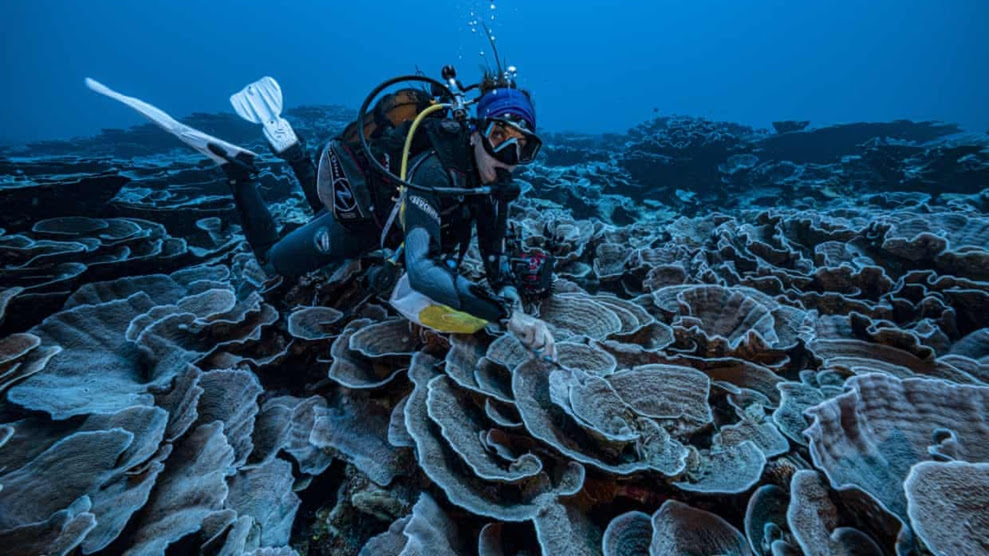Alexis Rosenfeld/AP
Hope has sprung from the depths of the oceans. Unesco researchers have discovered one of the largest healthy reefs ever recorded below 30 meters, off Tahiti. This one, which has giant rose-shaped corals, would be preserved from all pollution and the effects of climate change.
“The impeccable condition of the rose-shaped corals and the extent of the area they cover make this a very unusual discovery,” said UNESCO in a statement. The reef extends over three kilometers long and between 30 and 65 meters wide, between 35 and 70 meters deep, says the organization. Some giant corals measure two meters in diameter.
This is an exceptional discovery, because, until now, the vast majority of known coral reefs in the world are found at depths of up to 25 meters. This discovery therefore suggests that there are many other large reefs, located at depths of more than 30 meters, in what is known as the “twilight zone” of the ocean, which we simply do not know exists. “This is a little explored area. What we know well are the areas between zero and 30 meters,” explains to AFP Laetitia Hedouin, marine biologist and coral specialist, from the French research center CNRS and the environmental research organization CRIOBE.
“These corals do not show signs of stress or disease,” she continued, while corals closer to the surface in French Polynesia have experienced a bleaching episode in 2019. Starfish can also ravage corals by eating them. “We have lost about half of our coral reefs in the last 70 years,” Julian Barbiere of Unesco tells Skynews. “But coral reefs are very important to the health of the oceans – we know that they are home to about 25% of all the species we find in the marine environment. Reefs are also the place where we can potentially find new species and new medicines,” he continues.
This diving expedition took place in November 2021, thanks to specific diving equipment to descend so far. “The team made dives totaling about 200 hours to study the reef and were able to witness the coral spawning,” Unesco says. “It was magical to be able to observe these beautiful, giant rose-shaped corals stretching as far as the eye could see. It was like a work of art,” says Alexis Rosenfeld, French photographer and founder of the 1 Ocean campaign, who led the diving mission.
Stations and temperature sensors were dropped in the area. “We are at the beginning of a monitoring program that we hope will be long term”, to better understand why this coral reef has obviously not suffered from climate change and what its population dynamics are. This discovery also raises the question of “how to take into account these deep-sea areas in the development of marine protected areas”, underlines Laetitia Hedouin.
“The state of knowledge of the oceans is still limited, with only 20% of the planet’s seabed (…) mapped”, stresses UNESCO. Other dives are planned in the coming months to study the reef and the marine life it shelters. Unesco will also work with local communities to give them the tools they need to protect it – such as the designation of marine protected areas.



Comment here